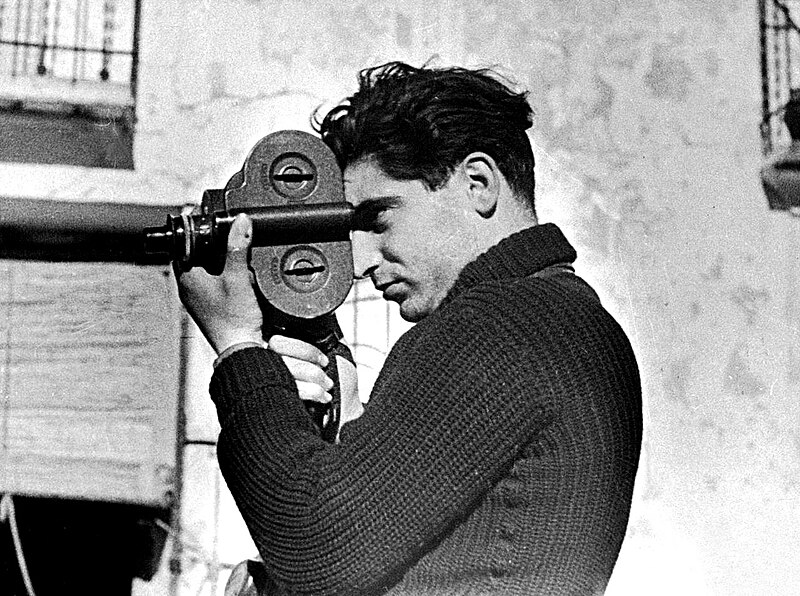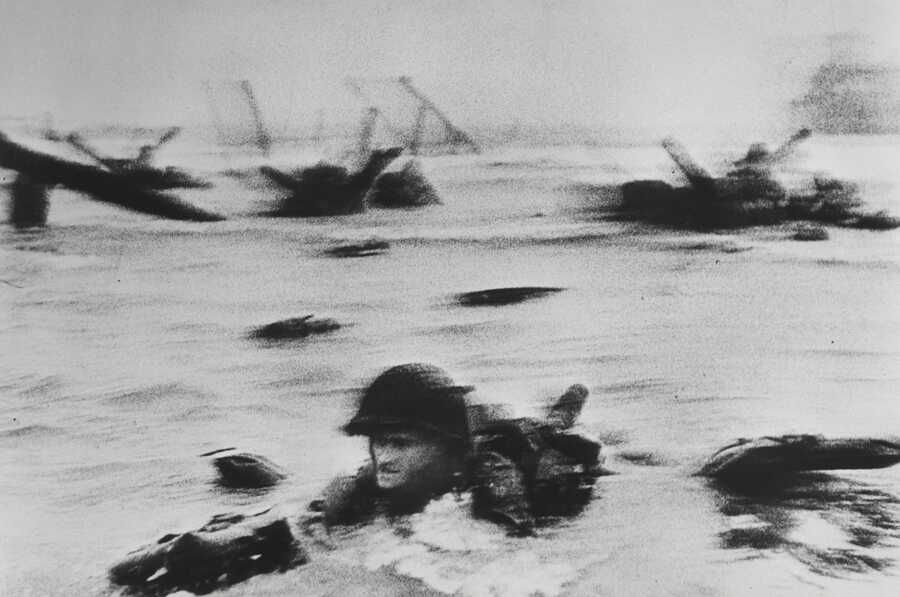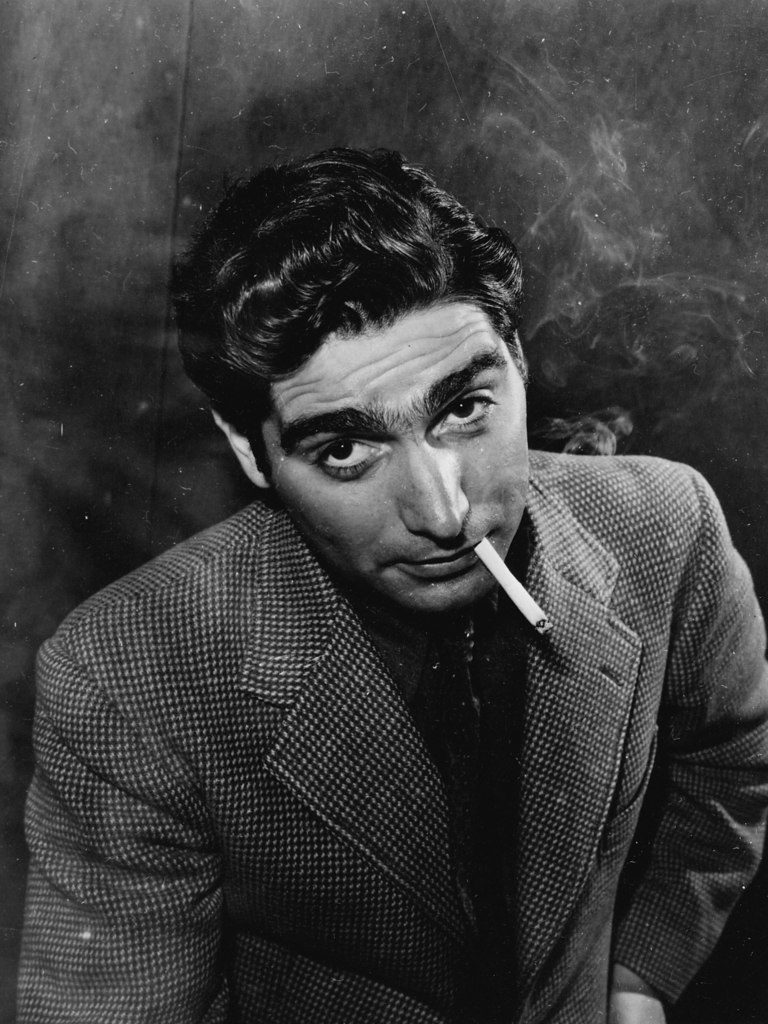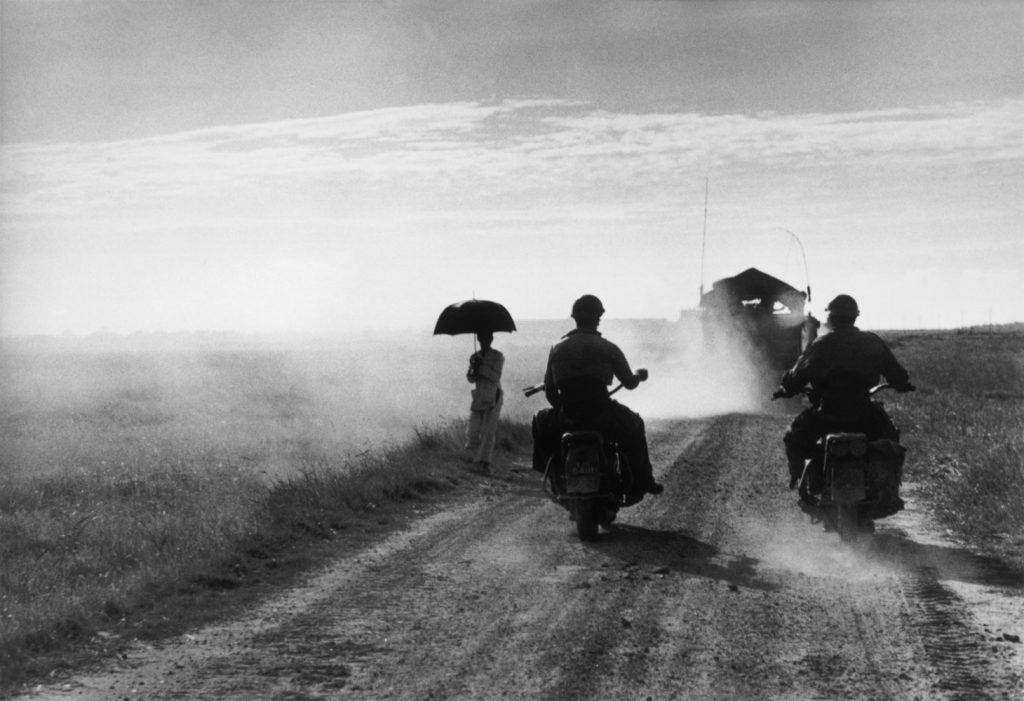
Capa on assignment in Spain, using a Eyemo 35 mm movie camera, photographed by Gerda Taro
In the annals of war photography, few names resonate as powerfully as Robert Capa. Born Endre Friedmann in Budapest in 1913, he later adopted the professional pseudonym Robert Capa, a name that would become synonymous with bravery, empathy, and the unyielding pursuit of truth through the lens.
Early Life and Exile
Capa’s journey began against the backdrop of political upheaval. Fleeing the rise of fascism in Hungary, he found refuge in Berlin before eventually settling in Paris. It was in the vibrant cultural milieu of Paris that Capa discovered his passion for photography, a medium that would become his lifelong vocation.

US troops assault Omaha Beach during the D-Day landings (first assault). Normandy., 1944 c. Magnum Photos
In the Trenches of War
Capa’s career burgeoned during the Spanish Civil War, where he captured some of his most iconic images. His evocative photograph titled “The Falling Soldier” remains etched in collective memory, a testament to his ability to encapsulate the intensity and human cost of conflict. Capa didn’t merely observe; he immersed himself in the front lines, taking risks that few dared.

Landings on D-Day: Normandy, 1944
Among his most celebrated works are the images from the D-Day landings in Normandy during World War II. Capa was embedded with the first wave of troops on Omaha Beach, producing images that conveyed both the chaos and valor of the pivotal moment. The term “If your pictures aren’t good enough, you’re not close enough” is often attributed to Capa, reflecting his commitment to proximity and capturing the essence of the moment.
Founding Magnum Photos
In 1947, Capa co-founded Magnum Photos, a cooperative agency that would redefine photojournalism. Alongside fellow luminaries such as Henri Cartier-Bresson, Capa aimed to empower photographers and preserve their artistic independence. Magnum became a crucible for shaping narratives through visuals, further solidifying Capa’s legacy.

Robert Capa © International Center of Photography Motorcyclists and women walking on the road from Nam Dinh to Thai Binh. Indochina. May, 1954. © Robert Capa © International Center of Photography | Magnum Photos
Korea and Indochina: Continuing the Quest
Capa’s dedication to documenting conflict extended to the Korean War and the First Indochina War. His lens bore witness to the ravages of these conflicts, conveying the toll they exacted on individuals and societies. His work from this period continued to reflect a deep empathy for the human condition amid adversity.
The Indomitable Spirit of Capa
Beyond the lens, Capa’s charisma and spirit were magnetic. His friendships with cultural luminaries like Ernest Hemingway and Ingrid Bergman underscored his ability to navigate both the worlds of journalism and art. His charm, combined with a relentless work ethic, left an indelible mark on those who knew him.
Legacy and Reflections
Tragically, Capa’s life was cut short in 1954 when he stepped on a landmine while covering the First Indochina War. Yet, his legacy endures in the indomitable spirit captured in his photographs. Robert Capa’s work challenges us to confront the human cost of conflict and serves as a timeless reminder of the photographer’s duty to bear witness to history.
In the world of photojournalism, Robert Capa’s legacy is not just in the frames he captured but in the courage with which he approached his craft. His life and work continue to inspire generations of photographers to wield their cameras as instruments of truth, even in the face of adversity.
